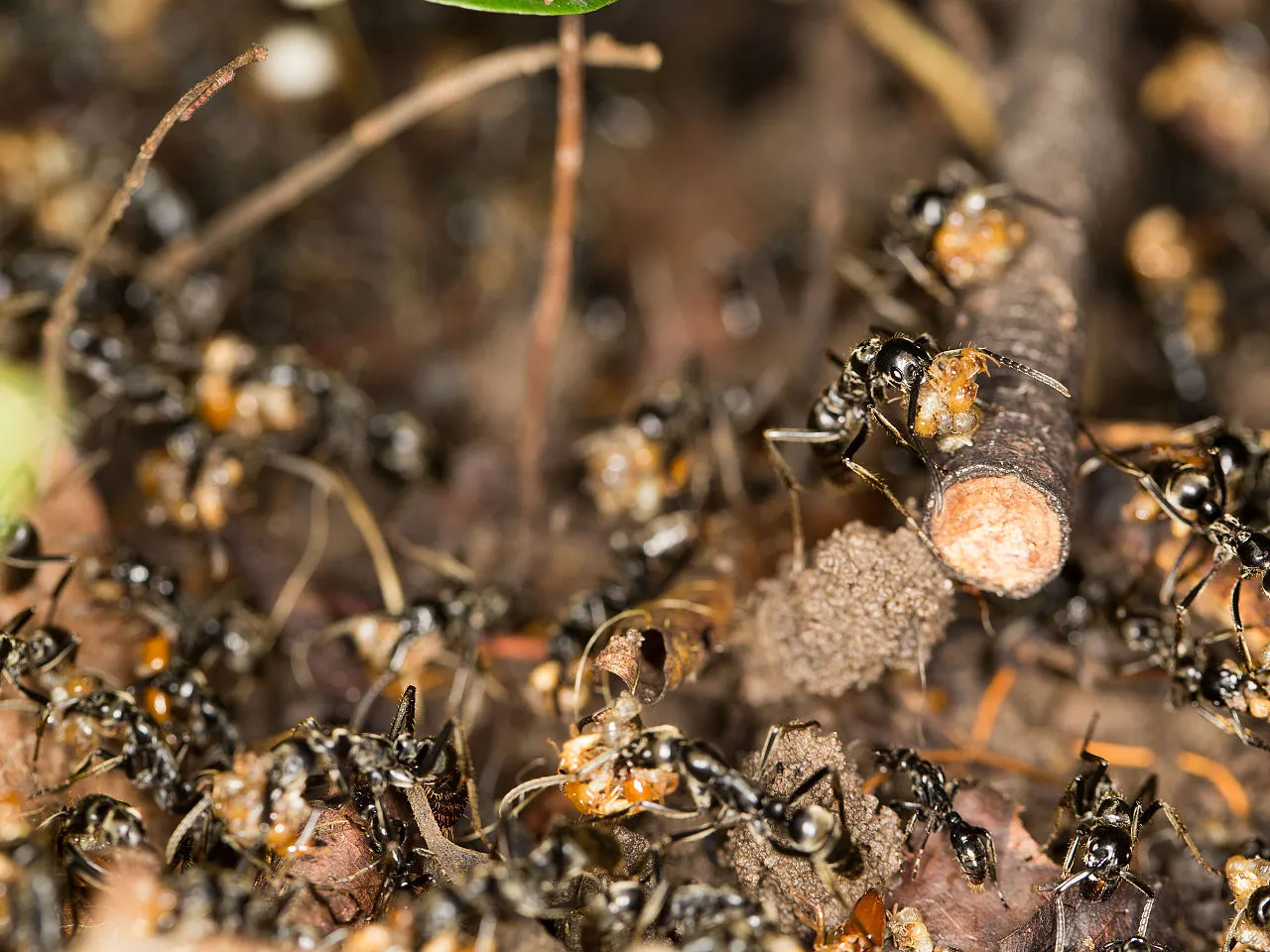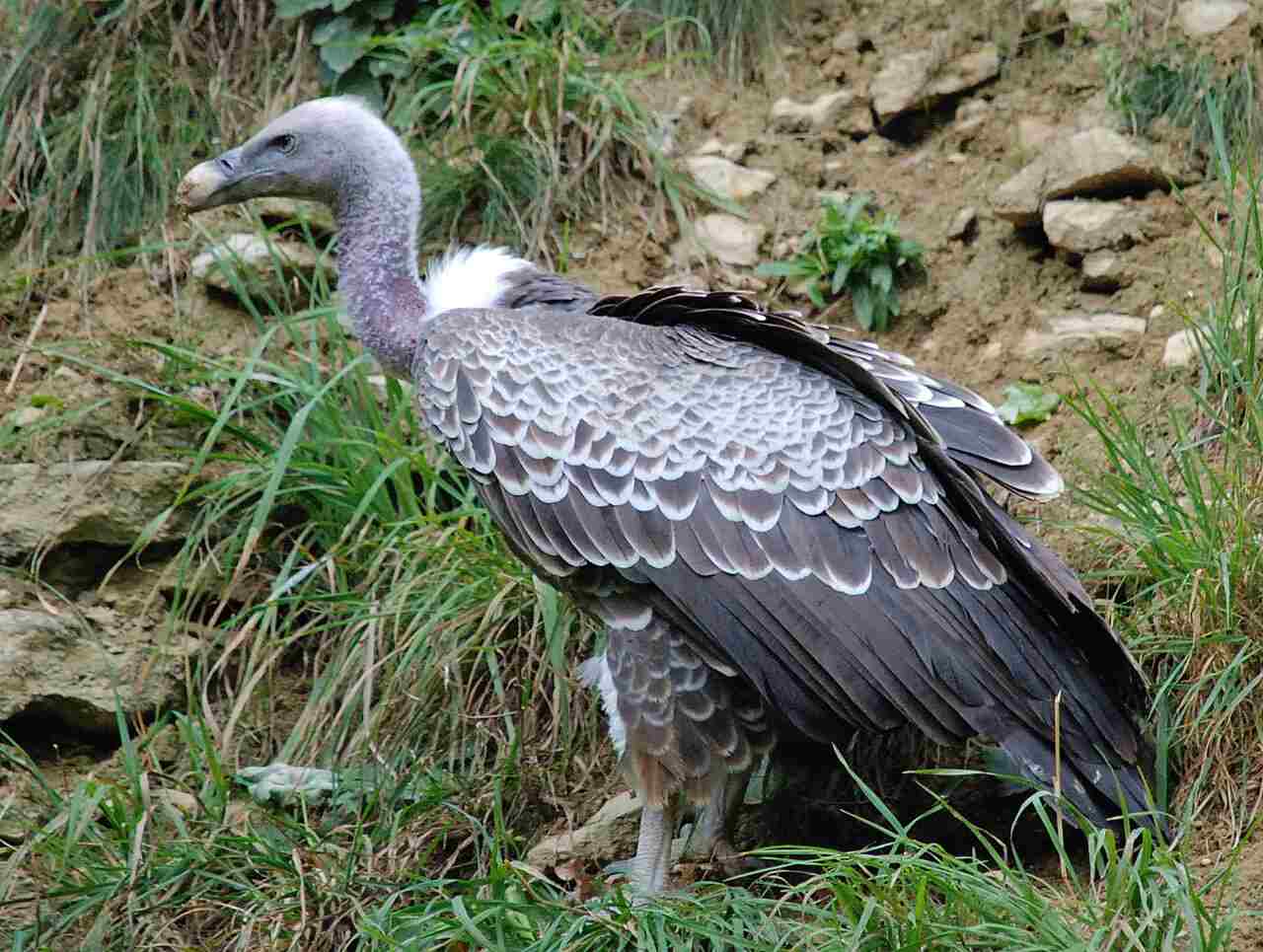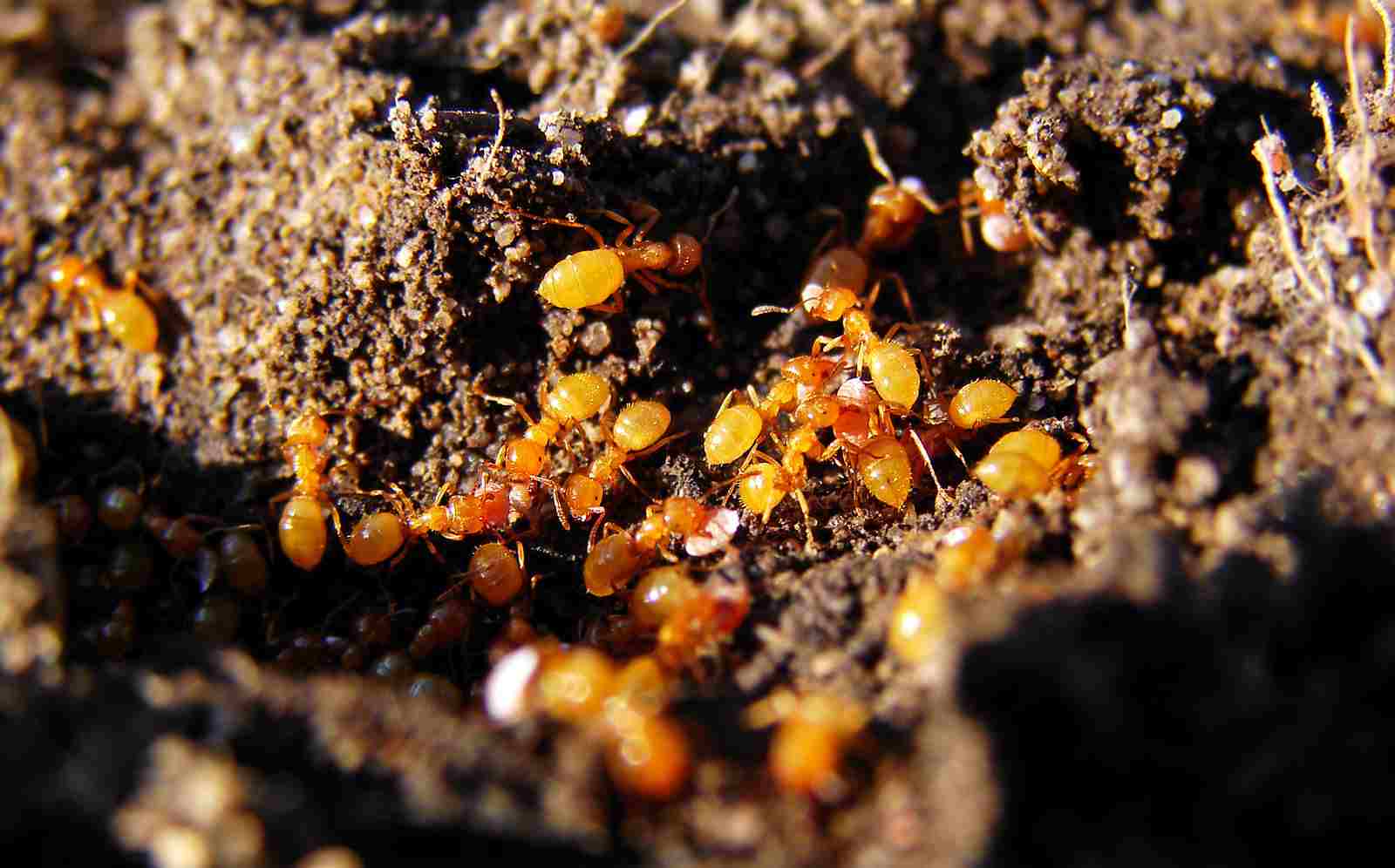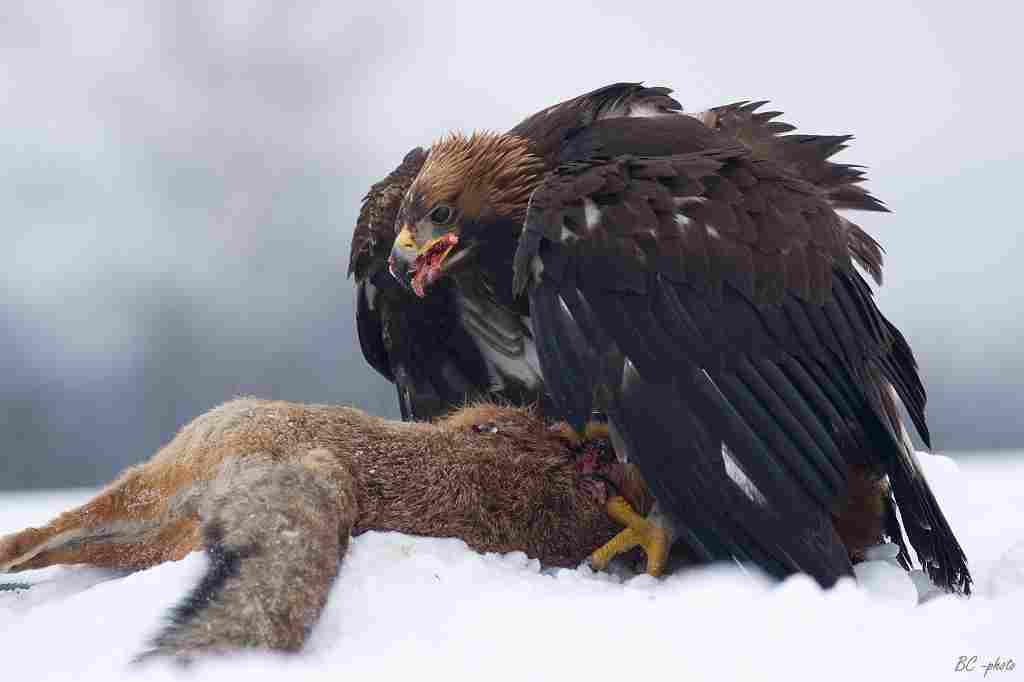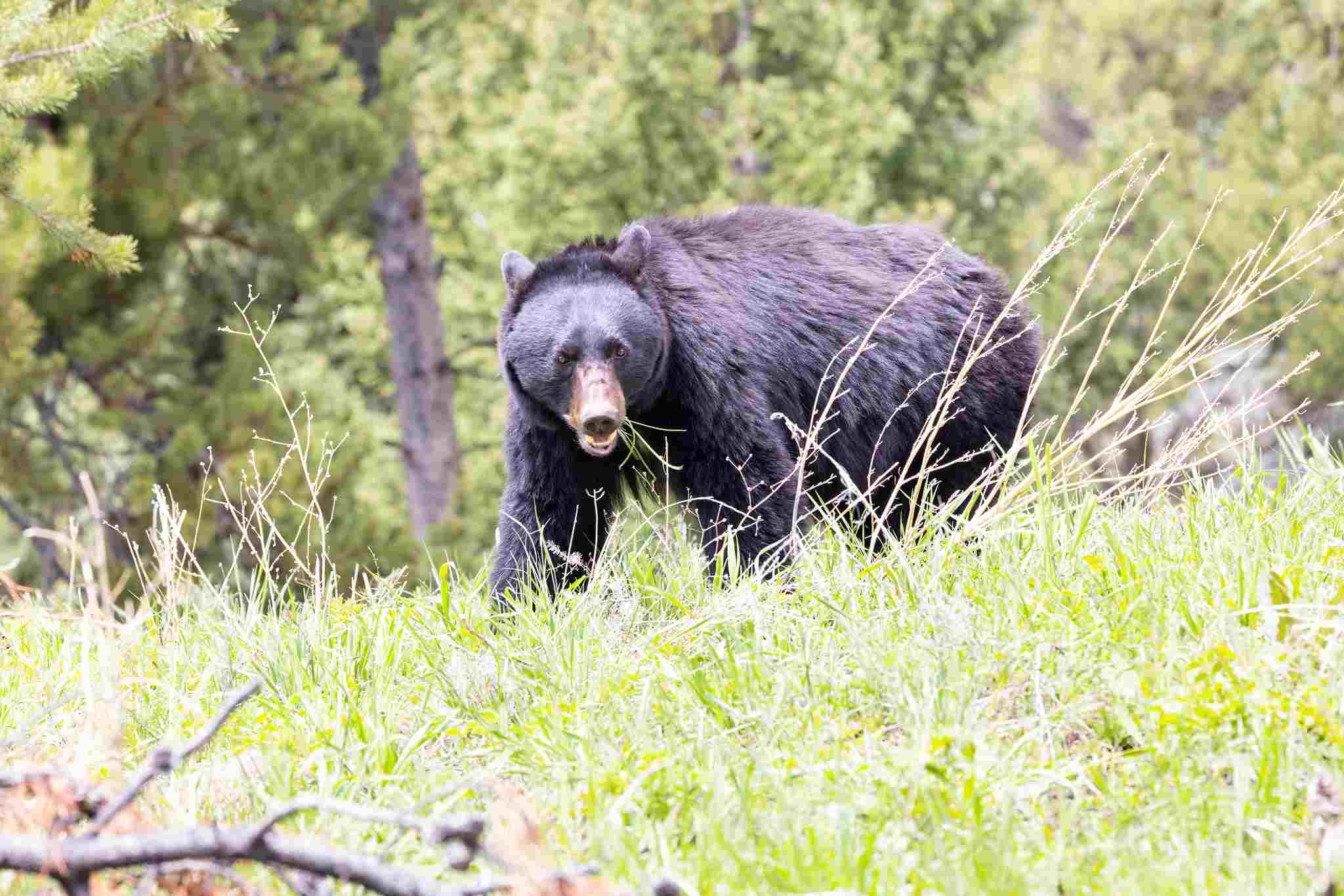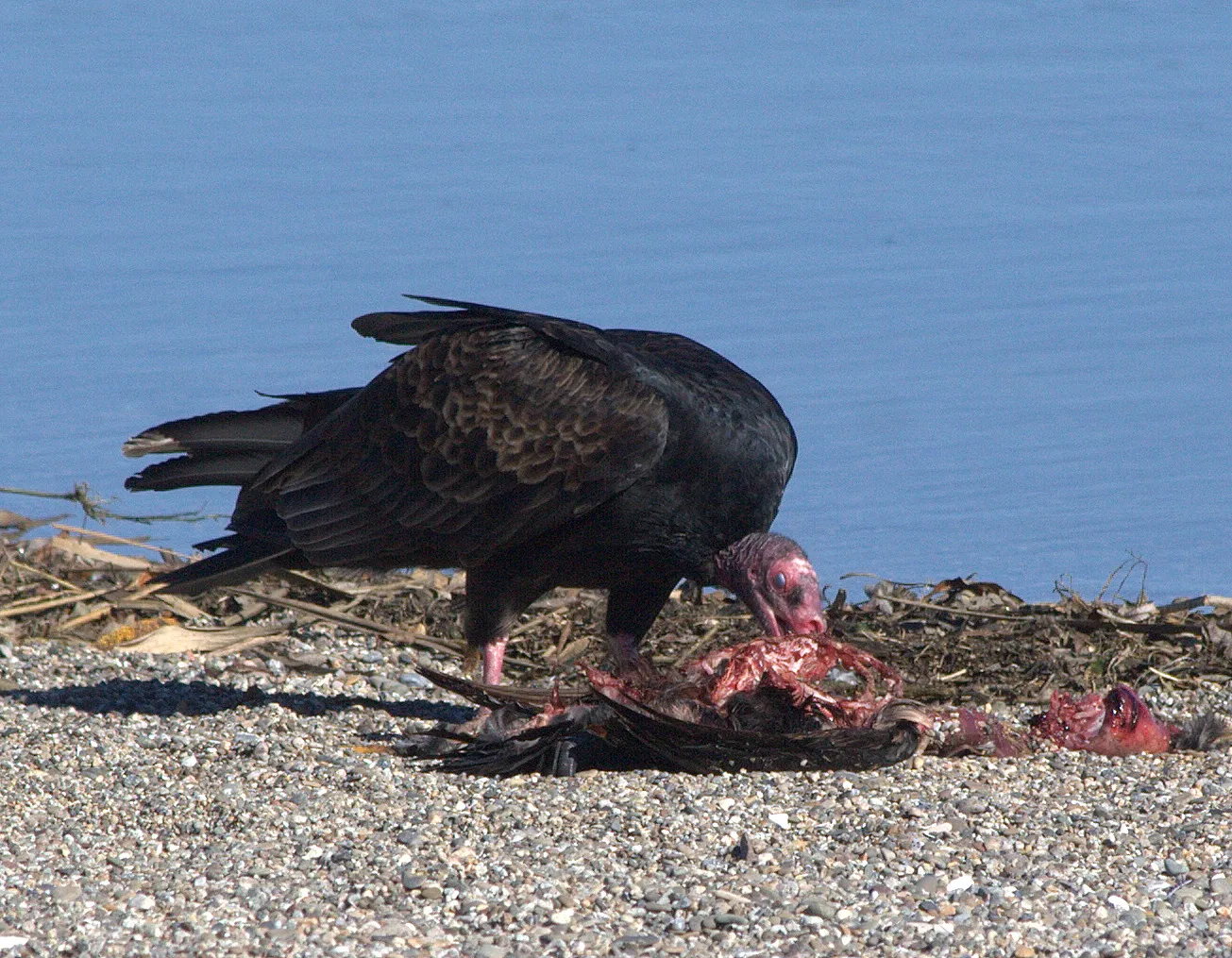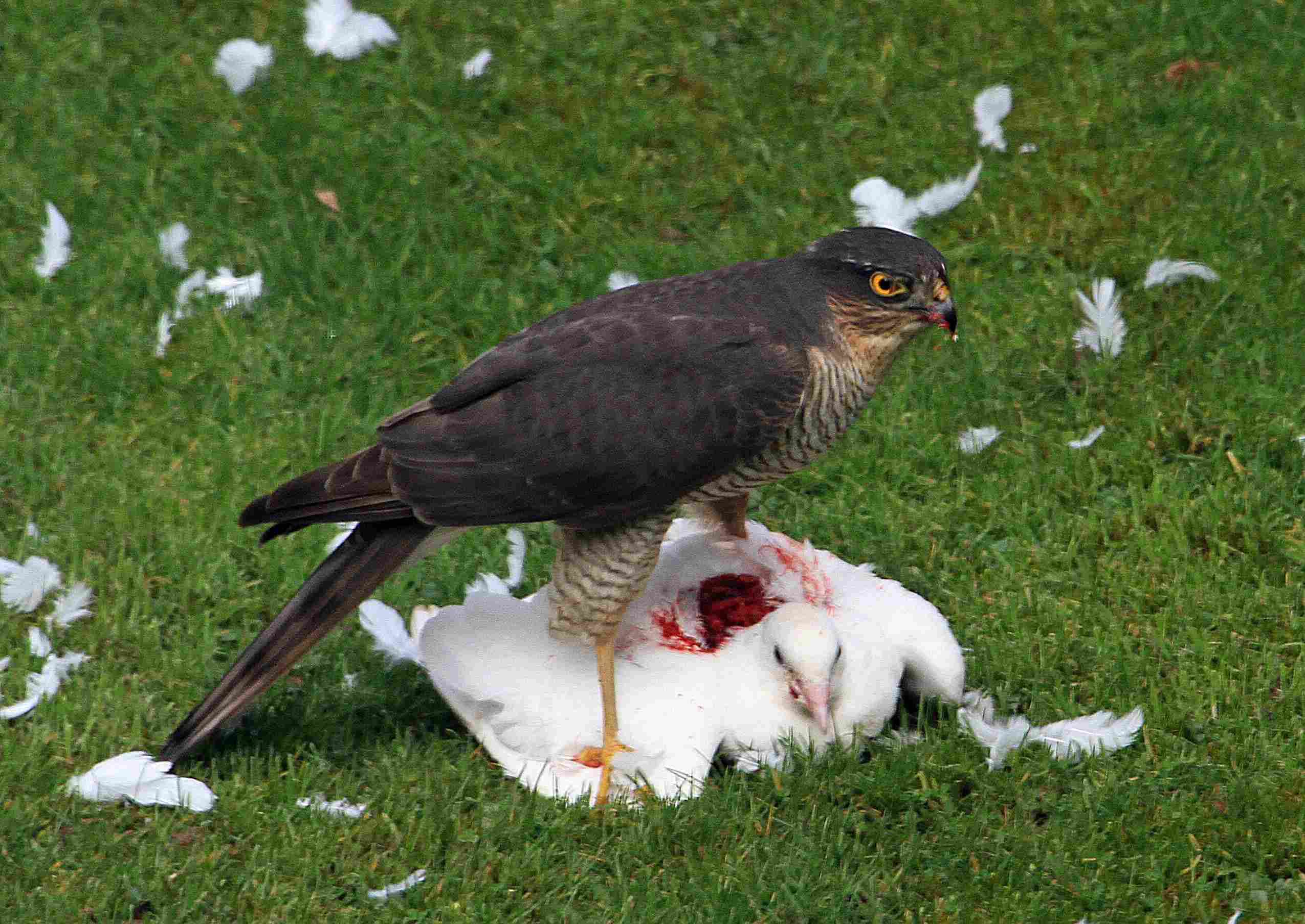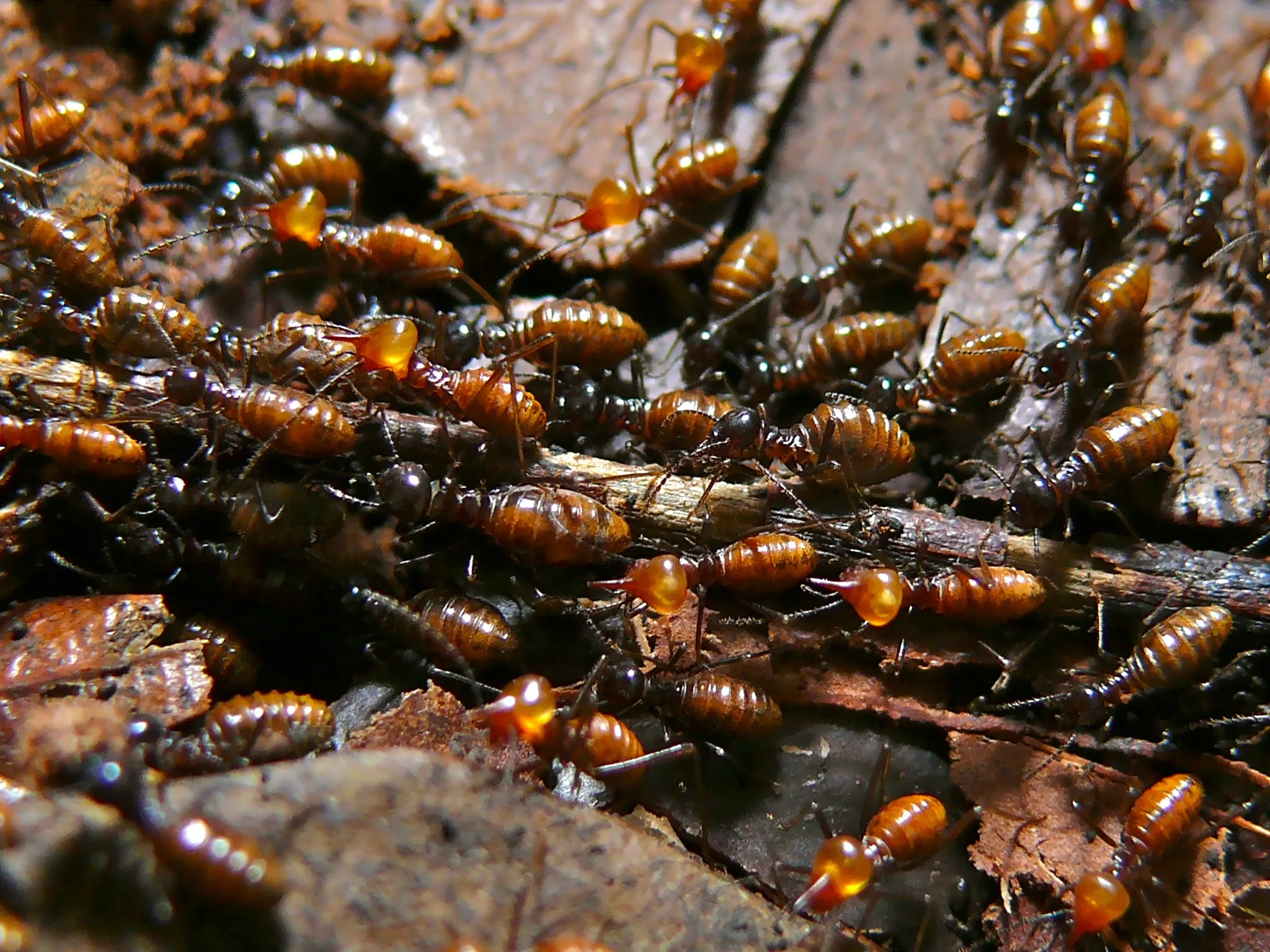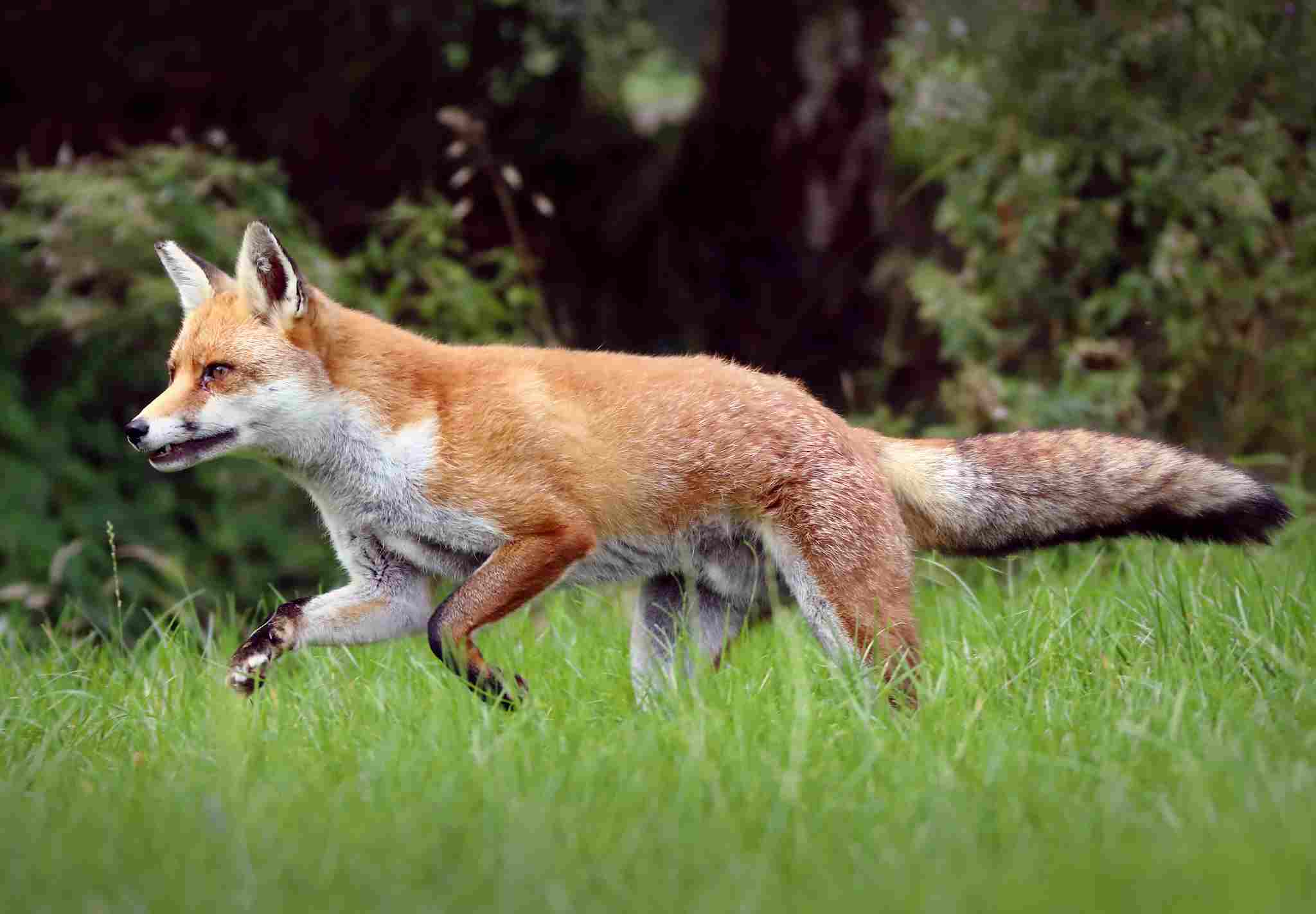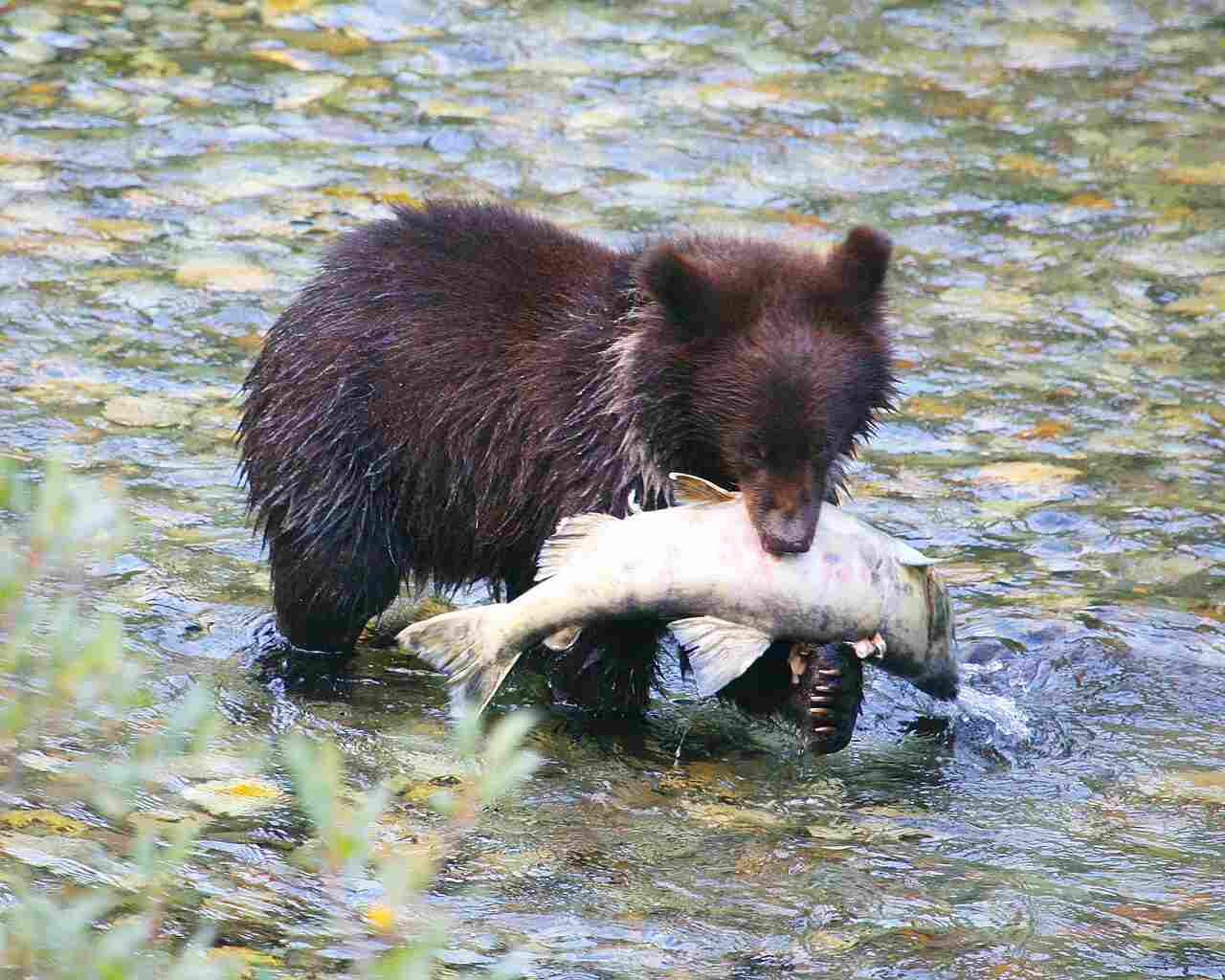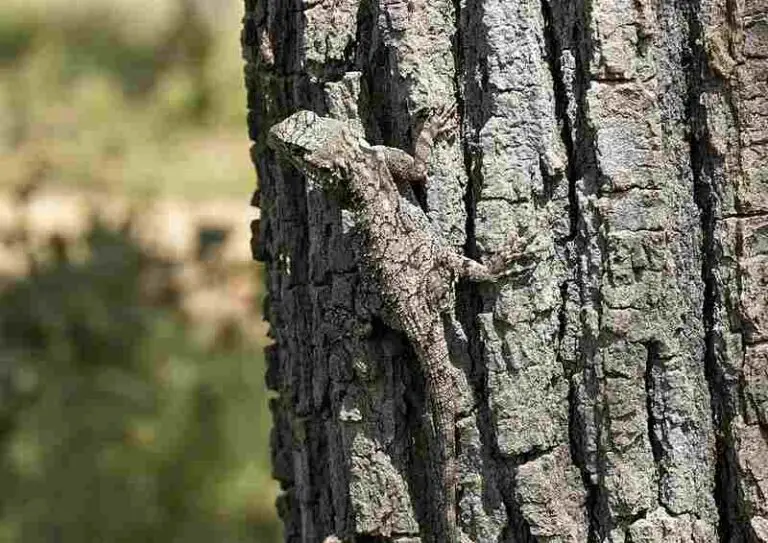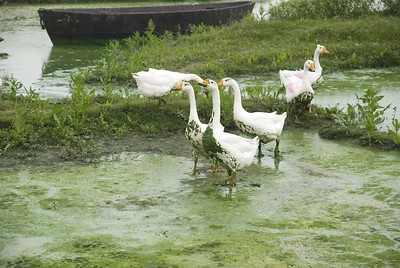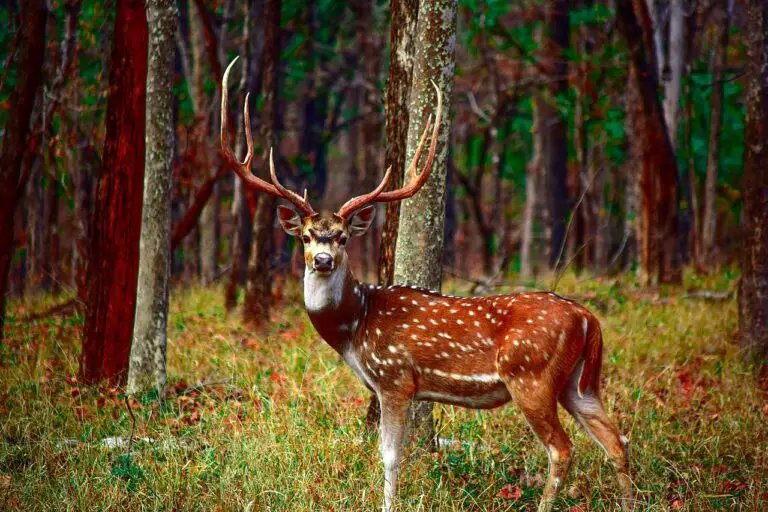9+ Examples of Scavengers in Temperate Forest Ecosystems Discussed
Examples of scavengers in temperate forest ecosystems are carpenter ants, sow bugs, bark beetles, blowflies, termites, crows, foxes, bears, hawks, and vultures. These organisms play a vital role in maintaining forest health by consuming dead organic matter, whether it’s wood, carrion, or decomposing plants. Through their scavenging activities, they contribute to nutrient cycling, reduce waste, and help prevent the spread of disease. Furthermore, these scavengers are integral to the food web, providing sustenance for other predators and creating habitats for smaller organisms. Their combined efforts ensure that the forest ecosystem remains balanced and vibrant.
1. Carpenter Ant
Carpenter ants are one of the larger ant species found in temperate forests, known for their industrious habits and the ability to cause significant structural damage by carving out tunnels in wood. Unlike termites, they do not consume wood; instead, they remove it to create nesting galleries. These ants play a role in the decomposition process by breaking down dead or decaying trees and are often found in rotting logs, tree stumps, or other wooden debris. While their tunneling can cause headaches for homeowners, in the forest ecosystem, they contribute to the recycling of deadwood, making nutrients available for other organisms.
In their scavenging role, carpenter ants feed on a variety of organic matter, including other insects, plant sap, and honeydew from aphids. Their flexible diet allows them to survive in diverse environments within the temperate forest. They are social insects, living in colonies that can contain thousands of individuals, and they have a complex communication system that uses pheromones to mark trails to food sources. Carpenter ants also act as prey for larger animals, thus playing an essential role in the forest food web.
2. Sow Bug
Sow bugs, also known as woodlice or pillbugs, are small crustaceans that are commonly found in the temperate forest, typically in moist environments under decaying leaves, rotting wood, or rocks. As scavengers, they play a crucial role in breaking down organic matter, consuming dead plant material, and returning nutrients to the soil. This process helps maintain soil health and fertility, allowing other plants to thrive. Although they resemble insects, sow bugs are actually more closely related to crabs and lobsters, breathing through gill-like structures that require a humid environment.
In addition to decomposing plant material, sow bugs also consume dead insects and fungi, contributing to the forest’s overall decomposition cycle. This cleanup role keeps the forest floor relatively clean and creates a more hospitable environment for other organisms. Their presence is an indicator of a healthy, functioning ecosystem, as they aid in nutrient cycling and contribute to soil structure through their burrowing activities. While sow bugs can be a minor nuisance in gardens or greenhouses, in the temperate forest, they are valuable players in the ecosystem’s maintenance.
3. Bark Beetle
Bark beetles are a diverse group of insects that are often found in temperate forests, where they play a critical yet complex role in the ecosystem. These tiny beetles are known for their ability to bore into tree bark, feeding on the inner layers of the tree, including the phloids and xylem, which can eventually kill the tree. While bark beetles are often seen as destructive pests, particularly in managed forests or plantations, they also contribute to natural processes such as forest regeneration and nutrient cycling. By killing weakened or stressed trees, they can clear the way for new growth and create habitats for other species.
In their scavenger role, bark beetles are attracted to trees that are already damaged or stressed by factors like drought, disease, or other environmental stresses. As they bore into the tree, they create intricate galleries that disrupt the tree’s nutrient flow. This activity can lead to increased deadwood in the forest, providing habitats for other scavengers and decomposers. Bark beetles are also part of a broader food web, serving as prey for birds and other insectivores. While their activity can have dramatic effects on forest landscapes, they are a natural component of temperate forest ecosystems, illustrating the complex interactions between different organisms.
4. Blowfly
Blowflies are a family of flies commonly found in temperate forests, where they play an important role as scavengers and decomposers. Known for their metallic coloration and rapid breeding cycles, blowflies are typically drawn to decaying organic matter, especially carrion or animal waste. Their larvae, known as maggots, are highly efficient at breaking down dead tissue, accelerating the decomposition process. This scavenging activity not only helps clean up the forest floor but also contributes to nutrient cycling by returning organic material to the soil.
Blowflies are often among the first scavengers to arrive at a site of decomposition, attracted by the scent of decay. They play a crucial role in the early stages of decomposition, providing food for other scavengers and facilitating the breakdown of organic matter. Additionally, blowflies serve as prey for a variety of animals, including birds, reptiles, and other insects, reinforcing their role in the forest food web. Despite their association with decay, blowflies are essential to maintaining the balance of the temperate forest ecosystem, turning death into a resource that supports new life.
5. Termite
Termites are small, social insects known for their ability to consume wood and other cellulose-based materials. In the temperate forest, they play a vital role in breaking down deadwood and other plant debris, contributing to the decomposition process and nutrient cycling. Termites live in large colonies, with specialized roles for different castes such as workers, soldiers, and reproductive individuals. Their wood-digesting abilities come from symbiotic relationships with gut bacteria and protozoa that help break down cellulose, turning it into energy for the colony.
Termites are often seen as pests due to their ability to cause structural damage to buildings and wooden structures. However, in their natural forest environment, they are essential decomposers that help convert dead organic matter into fertile soil. By recycling wood and plant debris, termites create a more sustainable ecosystem, allowing other plants and organisms to thrive. Moreover, they are a food source for a variety of animals, including birds, reptiles, and mammals, further integrating them into the temperate forest food web.
6. Crow
Crows are intelligent, adaptable birds commonly found in temperate forests. As scavengers, they play a significant role in the ecosystem by consuming a wide range of organic material, including carrion, insects, small animals, fruits, and even human-generated waste. This dietary flexibility allows crows to thrive in various environments, from forests to urban areas, where they often capitalize on discarded food and garbage. Their scavenging activities help clean up the forest floor and reduce waste, contributing to a healthier environment.
Crows are known for their intelligence and problem-solving abilities, often using tools to obtain food and displaying complex social behaviors. They are opportunistic feeders, taking advantage of whatever resources are available. This adaptability allows them to play multiple roles in the ecosystem, from scavengers to predators, depending on the context. As scavengers, crows contribute to the decomposition process and are part of the food web, serving as both predators and prey. Their vocalizations and social interactions also add to the complexity of the forest’s animal community.
7. Fox
Foxes are agile and adaptable mammals found in temperate forests. They are omnivorous scavengers, with a diet that includes small mammals, birds, insects, fruits, and even carrion. Their ability to consume a variety of foods allows them to thrive in diverse environments, from deep forests to edge habitats and urban fringes. As scavengers, foxes play a role in cleaning up the forest by consuming dead animals and other organic matter, which helps reduce the spread of disease and contributes to the ecosystem’s health.
Foxes are known for their keen senses, agility, and cunning, which help them hunt and scavenge efficiently. They often use their keen sense of smell to locate food sources, and their adaptability allows them to exploit different opportunities in the forest environment. In addition to scavenging, foxes are predators, helping control populations of small mammals and birds. Their role in the temperate forest ecosystem is complex, contributing to both the food web and the decomposition process, while also maintaining a balance between predator and scavenger roles.
8. Bear
Bears are large mammals commonly found in temperate forests, known for their strength and versatility. As omnivorous scavengers, they have a broad diet that includes plants, fruits, nuts, fish, small mammals, and carrion. Bears’ scavenging behavior contributes to the forest ecosystem by helping to break down dead animals and other organic matter, which in turn aids in nutrient cycling. They also play a key role in seed dispersal, as they often eat fruits and then excrete the seeds far from their source, aiding in forest regeneration.
Bears are highly adaptable and can thrive in a variety of forest environments, from dense woodlands to forest edges. Their scavenging activities help clean up the forest floor, reducing the presence of decaying matter that could otherwise attract pests or spread disease. As top predators, bears also help regulate prey populations, contributing to a balanced ecosystem. While they can be dangerous to humans if provoked, in their natural habitat, bears are crucial for maintaining the health and stability of the temperate forest ecosystem.
9. Hawk
Hawks are predatory birds often found in temperate forests, known for their keen eyesight and swift hunting abilities. As scavengers, hawks play a role in the forest ecosystem by consuming carrion when available, although their primary diet consists of small mammals, birds, reptiles, and insects. Their scavenging behavior helps clean up dead animals in the forest, reducing the risk of disease and contributing to nutrient recycling. While primarily seen as predators, hawks’ opportunistic scavenging adds a unique dimension to their role in the food web.
Hawks are skilled hunters, using their sharp talons and beaks to catch and consume prey. However, they are also known to take advantage of carrion when it is available, demonstrating their adaptability in finding food. This scavenging behavior helps maintain a clean and balanced ecosystem, as hawks consume dead or dying animals that might otherwise decompose slowly. Hawks also serve as a check on smaller animal populations, ensuring that no one species dominates the forest ecosystem. Overall, their role as both predators and scavengers contributes to the stability and health of temperate forests.
10. Vulture
Vultures are specialized scavengers that play a vital role in temperate forests by consuming carrion and other dead organic matter. Unlike other scavengers, vultures rarely hunt live prey, relying almost entirely on carrion for sustenance. This unique adaptation allows them to clean up the forest floor efficiently, reducing the risk of disease outbreaks caused by decomposing animals. Vultures’ strong stomach acids enable them to safely digest carrion that might be harmful to other animals, thus preventing the spread of pathogens.
Vultures are often seen circling above the forest, searching for carrion or waiting for larger predators to finish their meals. Their scavenging behavior is crucial for maintaining a healthy forest ecosystem, as they rapidly remove dead animals and recycle nutrients back into the environment. By consuming carrion, vultures also prevent the buildup of decaying matter that could attract pests or spread disease. Their role in the food web is unique, as they are not predators but still play a key role in regulating the forest’s organic matter. In this way, vultures are an essential component of the temperate forest ecosystem, providing a vital cleanup service.
*Summary
-
Carpenter Ant
-
Carve tunnels in wood, contributing to decomposition and nutrient recycling.
-
Do not consume wood but remove it to create nesting galleries.
-
Feed on organic matter like insects, plant sap, and honeydew.
-
Serve as prey for larger animals in the forest food web.
-
-
Sow Bug
-
Small crustaceans, often found in moist environments under decaying matter.
-
Break down organic material and contribute to soil health.
-
Consume dead plant material, dead insects, and fungi.
-
Create a cleaner forest floor and aid in nutrient cycling.
-
-
Bark Beetle
-
Bore into tree bark, feeding on inner layers, sometimes causing tree death.
-
Contribute to forest regeneration by clearing stressed or weakened trees.
-
Serve as prey for birds and other insectivores.
-
Create habitats for other scavengers through their activities.
-
-
Blowfly
-
Metallic-colored flies that are attracted to carrion and animal waste.
-
Larvae, known as maggots, rapidly break down dead tissue.
-
Contribute to nutrient cycling and reduce forest floor waste.
-
Serve as food for birds, reptiles, and other insects.
-
-
Termite
-
Consume wood and other cellulose-based materials, aiding decomposition.
-
Live in large colonies with specialized castes.
-
Help convert deadwood into fertile soil, supporting forest health.
-
Serve as prey for birds, reptiles, and mammals.
-
-
Crow
-
Intelligent birds with a flexible diet, including carrion, insects, small animals, and fruits.
-
Scavenging behavior contributes to a cleaner forest floor and reduces waste.
-
Adaptable and can thrive in various environments.
-
Play multiple roles in the ecosystem as scavengers and predators.
-
-
Fox
-
Agile mammals with an omnivorous diet, including small mammals, birds, insects, fruits, and carrion.
-
Scavenging helps clean up the forest and contributes to nutrient cycling.
-
Also act as predators, controlling small animal populations.
-
Adaptable and found in diverse environments, from forests to urban fringes.
-
-
Bear
-
Large omnivorous mammals with a diet that includes plants, fruits, nuts, fish, small mammals, and carrion.
-
Scavenging behavior contributes to nutrient cycling and reduces forest floor decay.
-
Serve as top predators, regulating prey populations.
-
Key role in seed dispersal, aiding in forest regeneration.
-
-
Hawk
-
Predatory birds known for keen eyesight and swift hunting abilities.
-
Scavenge carrion when available, contributing to nutrient recycling.
-
Serve as a check on smaller animal populations, maintaining forest balance.
-
Play a role in reducing the spread of disease by consuming dead animals.
-
-
Vulture
-
Specialized scavengers that consume carrion and dead organic matter.
-
Strong stomach acids allow them to digest carrion safely, preventing disease spread.
-
Rapidly clean up the forest floor, preventing decay buildup.
-
Play a unique role in the food web, primarily as scavengers, maintaining forest health.
-
| Scavenger |
Role in Temperate Forest
|
| Carpenter Ant |
Carves tunnels in wood contributing to decomposition and nutrient recycling; feeds on organic matter and serves as prey for larger animals in the forest food web.
|
| Sow Bug |
Breaks down organic material contributing to soil health; consumes dead plant material, dead insects, and fungi creating a cleaner forest floor and aiding in nutrient cycling.
|
| Bark Beetle |
Bores into tree bark feeding on inner layers; contributes to forest regeneration by clearing stressed trees; creates habitats for other scavengers and serves as prey for birds and other insectivores.
|
| Blowfly |
Metallic-colored flies attracted to carrion; their larvae break down dead tissue contributing to nutrient cycling; serve as food for birds, reptiles, and other insects.
|
| Termite |
Consumes wood and cellulose-based materials; aids in decomposition and soil health; serves as prey for birds, reptiles, and mammals while living in large colonies.
|
| Crow |
Intelligent birds with a flexible diet including carrion, insects, small animals, and fruits; their scavenging contributes to a cleaner forest floor and reduces waste; play multiple roles in the ecosystem as scavengers and predators.
|
| Fox |
Agile mammals with an omnivorous diet; their scavenging helps clean up the forest and contributes to nutrient cycling; also act as predators controlling small animal populations.
|
| Bear |
Large omnivorous mammals that scavenge carrion; their behavior contributes to nutrient cycling and reduces forest floor decay; play a role in seed dispersal aiding in forest regeneration.
|
| Hawk |
Predatory birds that scavenge carrion when available; contribute to nutrient recycling while serving as a check on smaller animal populations; reduce the spread of disease by consuming dead animals.
|
| Vulture |
Specialized scavengers that consume carrion and prevent disease spread; their rapid clean-up prevents decay buildup and maintains forest health; play a unique role in the food web as dedicated scavengers.
|
Related FAQs
Q: What is the role of scavengers in temperate forests?
-
A: Scavengers play a critical role in temperate forests by consuming dead organic matter, including carrion, dead plants, and other decaying materials. This activity contributes to nutrient cycling, reduces the risk of disease spread, and helps maintain a clean forest floor.
Q: How do carpenter ants differ from termites in their scavenging habits?
-
A: Carpenter ants carve tunnels in wood to create nesting galleries but do not consume wood. Termites, on the other hand, consume wood and other cellulose-based materials, aiding in decomposition and nutrient recycling.
Q: What do sow bugs eat, and why are they important in the temperate forest?
-
A: Sow bugs consume dead plant material, dead insects, and fungi. They are important because they break down organic matter, contributing to soil health and nutrient cycling, which supports forest ecosystems.
Q: Why are bark beetles sometimes considered harmful, yet beneficial to the forest ecosystem?
-
A: Bark beetles can harm forests by boring into tree bark and causing tree death. However, they also play a beneficial role by clearing stressed or weakened trees, contributing to forest regeneration, and creating habitats for other scavengers and decomposers.
Q: How do blowflies contribute to forest health?
-
A: Blowflies are among the first scavengers to arrive at sites of decomposition, where their larvae (maggots) break down dead tissue. This rapid decomposition contributes to nutrient cycling, and blowflies also serve as prey for birds, reptiles, and other insects.
Q: What is the significance of scavenging behavior in crows?
-
A: Crows are flexible scavengers that consume a variety of organic materials, including carrion, insects, and small animals. Their scavenging behavior helps reduce waste and maintain a cleaner forest floor, contributing to overall ecosystem health.
Q: How do foxes balance their role as scavengers and predators in the temperate forest?
-
A: Foxes are omnivorous and can scavenge carrion while also hunting small mammals, birds, and insects. This dual role helps them adapt to different environments, maintain a balanced diet, and control prey populations in the forest.
Q: What role do bears play in nutrient cycling and forest regeneration?
-
A: Bears contribute to nutrient cycling by scavenging carrion and other organic matter. They also play a key role in seed dispersal, as they often eat fruits and excrete the seeds, aiding in forest regeneration.
Q: Why are hawks considered both predators and scavengers in temperate forests?
-
A: Hawks are primarily predators, hunting small mammals, birds, and reptiles. However, they also scavenge carrion when available, contributing to nutrient recycling and reducing the spread of disease by consuming dead animals.
Q: What makes vultures unique among scavengers in temperate forests?
-
A: Vultures specialize in consuming carrion and rarely hunt live prey. Their strong stomach acids allow them to safely digest carrion that might be harmful to other animals, preventing the spread of disease and maintaining a healthy forest ecosystem.
